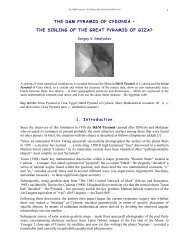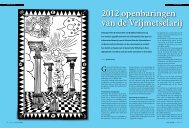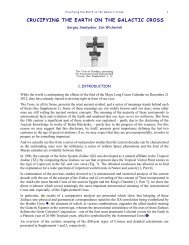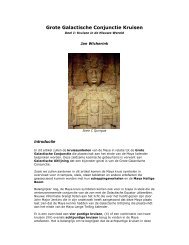Get a FREE Sampler PDF - Atlantis Rising Magazine
Get a FREE Sampler PDF - Atlantis Rising Magazine
Get a FREE Sampler PDF - Atlantis Rising Magazine
Create successful ePaper yourself
Turn your PDF publications into a flip-book with our unique Google optimized e-Paper software.
OUT-OF-PLACE ARTIFACTS<br />
TIME TRAVEL EVIDENCE<br />
Does a 16th-Century Painting Show Technology from the Future?<br />
O • BY JOSEPH ROBERT JOCHMANS<br />
ur world is filled with many anomalies,<br />
most of them well documented<br />
and incontrovertible, which demonstrate<br />
that space and time are not<br />
what we think they are. One of the strangest<br />
of these is an enigmatic object which appears<br />
in a painting in the little church of Montalcino<br />
in Italy, dating to over four hundred<br />
years old. The object can be classified as a<br />
genuine “out-of-place” artifact, because it incorporates<br />
several apparently advanced aspects<br />
in its design.<br />
But the context in which it was placed in<br />
the painting and portrayed in detail opens up<br />
a whole different level of technological inquiry<br />
and potential achievement. The item’s<br />
existence raises not only the question of<br />
where did it come from, but more importantly,<br />
when did it come from? For here we<br />
are faced with something that is more than<br />
out of place, it also appears to have come<br />
from a totally different time.<br />
In essence, what we may be looking at<br />
could be the first real evidence for time<br />
travel.<br />
At this point, we cannot be sure if the<br />
item in question manifested from our future<br />
or if it represents some kind of time-traveling<br />
technology, which was the product of the unknown<br />
past, built and sent forward to our period<br />
from some prehistoric civilization now<br />
lost to us. Let the readers judge for themselves.<br />
In 1595, Italian artist Bonaventura Salimbeni<br />
(1567-1613) was commissioned to produce<br />
a painting for the right-hand altar of the<br />
Church of St. Peter at Montalcino, located<br />
within a few miles of Florence. He was a<br />
member of a prominent family of artists from<br />
nearby Siena, and the goal of his commission<br />
was that his work be completed for the Christian<br />
Jubilee Year of 1600. According to the<br />
message accompanying his signature, Salimbeni’s<br />
painting was finished right on<br />
schedule.<br />
The Montalcino art masterpiece is entitled<br />
“The Glorification of the Eucharist,” and<br />
features a vertical work divided into three<br />
segments. The lower third depicts a number<br />
of worshipping figures seated before the<br />
altar, including priests, cardinals and one individual<br />
wearing a papal crown believed to<br />
represent Pope Clement VII.<br />
The middle third shows the altar itself,<br />
and prominently displayed in its center is the<br />
Cup of the Eucharist emblazoned in glowing<br />
light.<br />
The upper third of the painting symbol-<br />
izes heaven, dominated by the three Beings<br />
of the Holy Trinity who are looking down on<br />
the earthly scene below and giving their<br />
blessings—God the Father depicted as a<br />
Moses-like bearded old man, God the Son as<br />
Jesus Christ, and the Holy Spirit portrayed<br />
as a Dove hovering above the center.<br />
What immediately catches the viewer’s<br />
attention, however, is something pictured in<br />
among the Trinity members that to modern<br />
eyes seems very familiar, but not from the<br />
right time period. The first impression is<br />
that it looks exactly like a spheroid satellite<br />
with two antennae, something akin to the<br />
old Russian sputniks or American vanguard<br />
orbiters of the late 1950s. But what is it actually<br />
supposed to be?<br />
Renaissance art experts interpret the<br />
strange sphere as representing the universe,<br />
showing the faint lines of celestial longitude<br />
and latitude, plus the images of an obscure<br />
sun and an exaggerated crescent moon<br />
Continued on Page 62<br />
See Our Great 8-page Catalog Beginning on Page 74 Number 71 • ATLANTIS RISING 29















